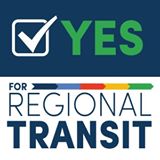Have you ever really thought about what allows you to connect to your neighborhood, to basic necessities, to your daily routine?
Every Monday through Thursday morning, I grab the keys to my Jeep and walk down the front stairs of my brick apartment building to the adjacent gated lot. I turn on my favorite podcast, or an audio book, or the Spotify playlist that best reflects my mood, and I merge onto I-75, resigned to a forty-five minute commute that I have re-branded as “me-time”.
Every other day, my neighborhood and this city are at my fingertips and under my feet. I bike to TechTown on a Friday morning, or to Eastern Market for fresh veggies on a Saturday afternoon. I walk a block to Avalon Bakery for a famous sea-salt and chocolate chip cookie. I meet some fellows to finish work at Great Lakes Coffee down the street. I walk past the dog park around the corner and stop to talk to the lady selling plants from a food truck. Half asleep, I might stumble to Honest John’s for some greasy breakfast food after a late night, past crumbling walls and street art and some broken glass that I don’t really notice anymore.
Before moving to Detroit, I never really thought about how I actually got to where I needed to go. I realize now that is a luxury that many in this city do not have. Detroit is a city that was built for cars, not for people; where blocks of restaurants and shops can quickly turn into surface parking lots, and highways arguably dissect the city more than connect it.
Anyone following the New Urbanism movement will tell you that planners, millennials, and city officials across the country are fixated by buzzwords like the “walkable neighborhood” and “transit-oriented development”. After decades of disinvestment and suburban sprawl, the idea is taking hold that job growth, food security, and sustainable infrastructure depend on living, working, and playing in reasonable proximity.
This is what human-centered design is all about, and there is no doubt that accessible and affordable transit on a regional scale is a much-needed step to achieving this reality. This November 8th, Southeastern Michigan will be voting on a millage to implement the Regional Transit Authority’s master plan. This comprehensive plan will start to connect Point A with Point B, bringing people, jobs and resources together to form a better city and a stronger metropolitan region.


